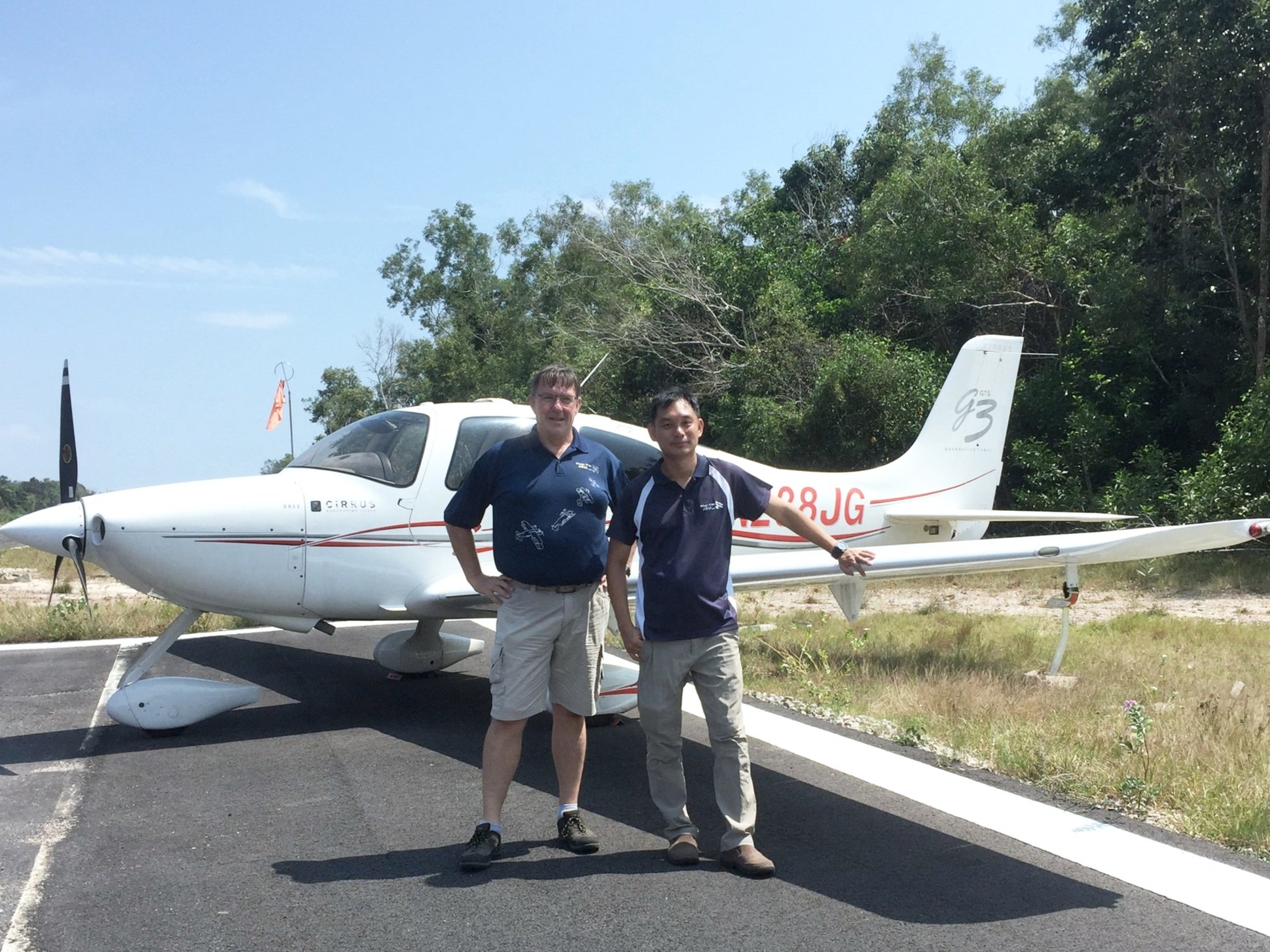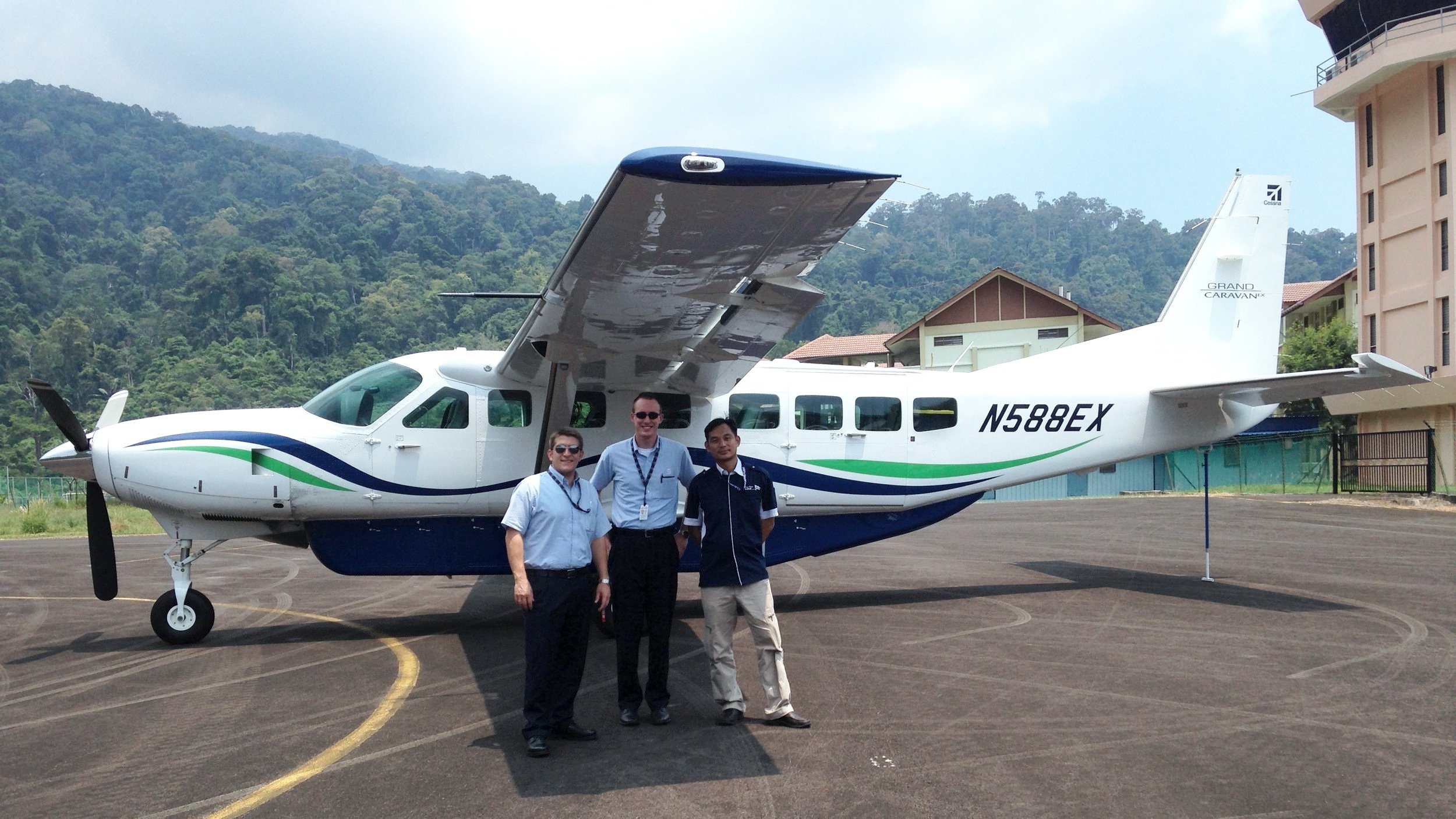ADVANCED FLIGHT TRAINING
All new generation sophisticated aircraft that we fly ourselves and our loved ones in today requires us to maintain an on-going quest for knowledge to stay proficient and safe. In an aviation era where change seems to be the only constant, we provide pilot proficiency training programs such as aircraft type familiarization, glass cockpit and various advanced flight training courses.
-
Learning disciplined, proficient and safe operations of advanced airplanes is often fun and rewarding at the same time.
Specialising in popular light pistons like Cirrus, Piper, Diamond as well as single-engine turboprops and selected light jets, we will train you to proficiently to fly the aircraft of your desire.
-
Having operated Southeast Asia's first private aircraft glass cockpit in 2003, WOA remains adept at the fore-front of operating and servicing this technology. We have conducted many training sessions for both local and overseas pilots of varying flying experience.
-
Our mentor instructor pilots will assist in helping you familiarise with navigating and communicating within local/regional airspace safely and efficiently while gaining proficiency in your new airplane.
Advanced Flight (Pilot Proficiency) Training
“How far do we go to ensure private aircraft owners and pilots are safe and proficient? Well... the sky’s the limit as they say.”
-
Aircraft Type Conversion

-
Glass Cockpit Familiarisation

-
Instrument Flying Proficiency

-
Turboprop/Light Jet Mentor Flying

DA40/PA28/SR22/DA42/DA62 Type Conversion
You have a private pilot license but wish to gain experience and knowledge flying a different aircraft type from the make/model you trained in. You bought a new aircraft and needs to gain knowledge of the new type.
-
Aircraft make/model specific systems training with knowledge test and flight training to achieve competency on aircraft.
-
Aircraft make/model specific 1 day classroom systems training and minimum 5-10 hours of flight training (depending on experience) or as required to demonstrate competency.
-
Hold at least a current private pilot certificate with valid medical certificate.
FAA Instrument Rating Prep
Typically the next big knowledge leap in your flying knowledge and skill, after gaining your private pilot license or having flown leisurely under Visual Flight Rules for several years. Instrument flying training trains you to be able to fly under less than ideal weather conditions where visual references becomes limited and you need to utilize more advanced set of procedures and techniques to operate your airplane safely for all phases of your flight.
-
Cover the areas of operations listed in 14 CFR 61.65(c) via
Fight training in an aircraft, flight simulator, or flight training device that represents the aircraft appropriate to the instrument rating sought
Ground training from an authorised instructor in combination home-study course.
-
1-6 months part-time depending on intervals between training
-
Hold at least a current private pilot certificate with valid medical certificate.
Minimum of 25 hours of Cross Country Pilot in Command logged, (an additional 25 hours is obtained during training) total 50 hours at time of check ride.
Birth Certificate or Current Passport showing proof of US citizenship OR TSA approval for non-US citizens.
FAA Multi-engine Prep
Train for Multi Engine Add-On Rating in the state-of-the-art Diamond DA62 seven seat, twin engine aircraft that pilots are raving about. Multi-engine training paves the way for you to upgrade your aircraft control techniques and skills while experiencing the simplicity and efficiency of the FADEC controlled engine.
Being qualified in a Diamond DA62 also means access to a modern and safe airplane with a range of over 1200 nm and a cruise speed at 75% power of 171 knots designed to get you where you’re going, comfortably and in style.
Additionally, having multi-engine training in a glass cockpit aircraft prepares you for future single-pilot turbine/jet operations and on your path to act as pilot-in-command of a jet.
State-of-the-art twin-engine airplane for the best training.
-
Details coming soon.
Our emphasis on single pilot resource management and scenario-based training ensures you are prepared to operate safely and confidently in a multiengine aircraft. -
1 week (full-time) to 4 weeks (part-time). Approx 5-10 hours of flying time depending on pilot experience and ground school.
-
Hold at least a current private pilot certificate with valid medical certificate.
Birth Certificate or Current Passport showing proof of US citizenship OR TSA approval for non-US citizens.
FAA Complex / High Performance / Technically Advanced Airplane Endorsement
Be trained to fly and act as pilot-in-command of an airplane defined by FAA as
Complex Airplane
Retractable landing gear, Flaps, Controllable Pitch Propeller
High Performance Airplane
Aircraft equipped with an engine rated at more than 200 horsepower
Technically Advanced Airplane
Components of advanced avionics systems including a primary flight display (PFD), a multifunction flight display (MFD) and an integrated two axis autopilot.
-
Receive and log ground and flight training from an authorized instructor in the relevant areas of operations.
-
For Complex & High Performance endorsements, 1 to 2 flights with few hours of briefing on training objectives and theory of relevant systems.
For Technical Advanced Airplane endorsements, 1-2 days of ground school and briefing on systems and scenario-based practice with 1-2 flights.
-
Hold at least a current private pilot certificate with valid medical certificate.
FAA Flight Review / Instrument Proficiency Check
For holders of pilot certificates issued by the USA FAA a flight review (previously known as a biennial flight review, usually abbreviated BFR) is a review required of every active holder of a U.S. pilot certificate at least every 24 calendar months before being able to act as pilot in command (PIC).
An FAA instrument rated pilot needs to fly a minimum of six instrument approaches within the previous 6 months before he or she can act as PIC under IFR. If the pilot is not in compliance, he or she has 6 more months (grace period) to fly the required approaches with a safety pilot under simulated IMC (actual IMC) or using an approved simulator device to remain current. If the pilot does not fly the six approaches after the second 6 month period, he or she must successfully complete an IPC before he or she can act as PIC under IFR.
-
For Flight Reviews, as per FAA 14 CFR 61.56.
Minimum of 1 hour of flight training and 1 hour of ground training which includes:
(1) A review of the current general operating and flight rules of part 91 of this chapter; and
(2) A review of those maneuvers and procedures necessary for the pilot to demonstrate the safe exercise of the privileges of the pilot certificate.For Instrument Proficiency Check, as per FAA CFR 61.57.
(1) A full review of knowledge and procedures needed to safely fly an aircraft on an instrument flight plan flown under actual or simulated (“under the hood”) instrument meteorological flight conditions.
(2) Pre-flight discussion that involves answering questions, solving problems, and demonstrating knowledge of procedures, requirements, and knowledge of instrument flight requirements.(3) A flight that involves planning a route, collecting weather information relevant to that flight, preparing a flight plan, flying the flight, properly reacting to instructions and deviations and performing instrument maneuvers and approaches to meet recency requirements while displaying proficiency.
-
Min 1 hour ground and 1 hour flight for Flight Review.
AS required to demonstrate proficiency for Instrument Proficiency Check
-
Hold an existing FAA airmen license with valid medical certificate.
Garmin G1000/G1000Nxi Glass Cockpit Scenario-based Training
WOA were the pioneers in operating, flying and teaching Garmin G1000 glass cockpits since 2005 using our own customised scenario-based syllabus.
Transitioning to a Garmin G1000/G1000Nxi, often referred to as Glass Cockpit Transition, is the future of navigation. The Garmin series of glass cockpits has quickly become the standard navigation choice for new aircraft including majority of light jets. The range of features can be daunting, but like anything else it makes sense once you practically understand how the system works.
Garmin G1000Nxi Operators Training for Indonesia Navy
G3000/G5000 training can be conducted in your airplane as well.
-
Our in-house G1000 transition course using a combination of Garmin G1000 desktop training device, simulators as well as in the real airplane on the ground using backup power, to learn all of the features of the system and associated autopilot.
Training includes learning the basic functions, concepts, and troubleshooting knowledge at the operator level.
Practical scenarios will be used to practice usage of Garmin glass cockpit in both VFR and IFR flying.
-
1-2 days of ground training, depending on experience with glass cockpit operations, with optional flight training (2-5 hours flight time).
-
Anyone with any pilot license.
CAAS Night Rating
A Singapore PPL wishing to fly as pilot-in-command at night alone or with passengers must undergoing additional training to add a Night Rating on their license.
-
Satisfactory completion of an approved course of at least 5 hours night flying which consist of.
(1) at least 3 hours dual instruction including at least one hour night
navigation;
(2) at least 5 flights by night to complete 5 take-offs and full-stop landings as pilot-in-command -
1 -6 months
-
CAAS Private Pilot License holder with valid medical.
At least 50 hours of total flying experience, of which, at least 20 hours are flown as pilot-in-command.
Turboprop/Turbine Mentor Flying
FAA High Altitude Endorsement
Details coming soon. Contact us for customised one-on-one training.
-
Details coming soon.
-
Details coming soon.
-
Hold at least a current private pilot certificate with valid medical certificate.
Island Airport/STOL Endorsement
Certain short island airstrips (e.g. Pulau Tioman) or high risk approach airports requires special training endorsements as required by local aviation authorities or simply as a recommendation for safe operations. We provide customised training to the airports.
Tioman Island endorsement for Cessna demo pilots
-
Details coming soon.
-
1-2 days with ground briefing and 1-2 flights and sufficient approaches to achieve proficiency.
-
Hold at least a current private pilot certificate with valid medical certificate.
Mentor Flying (your airplane)
Details coming soon. Contact us for customised one-on-one training.
-
Details coming soon.
-
Details coming soon.
-
Details coming soon.

Find out More?
Schedule a meet-up for us to explain to you the details over coffee at our Aviator’s Lounge.



